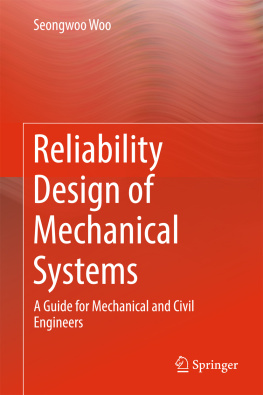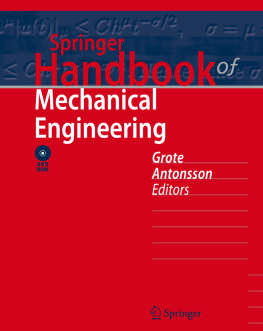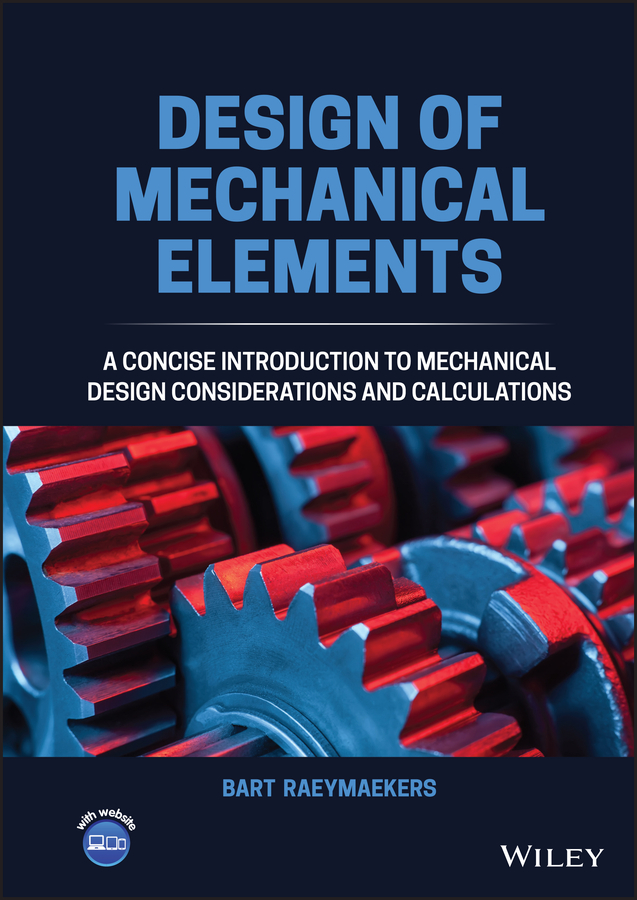Bart Raeymaekers - Design of Mechanical Elements: A Concise Introduction to Mechanical Design Considerations and Calculations
Here you can read online Bart Raeymaekers - Design of Mechanical Elements: A Concise Introduction to Mechanical Design Considerations and Calculations full text of the book (entire story) in english for free. Download pdf and epub, get meaning, cover and reviews about this ebook. City: Hoboken, year: 2022, publisher: Wiley, genre: Science. Description of the work, (preface) as well as reviews are available. Best literature library LitArk.com created for fans of good reading and offers a wide selection of genres:
Romance novel
Science fiction
Adventure
Detective
Science
History
Home and family
Prose
Art
Politics
Computer
Non-fiction
Religion
Business
Children
Humor
Choose a favorite category and find really read worthwhile books. Enjoy immersion in the world of imagination, feel the emotions of the characters or learn something new for yourself, make an fascinating discovery.

- Book:Design of Mechanical Elements: A Concise Introduction to Mechanical Design Considerations and Calculations
- Author:
- Publisher:Wiley
- Genre:
- Year:2022
- City:Hoboken
- Rating:4 / 5
- Favourites:Add to favourites
- Your mark:
Design of Mechanical Elements: A Concise Introduction to Mechanical Design Considerations and Calculations: summary, description and annotation
We offer to read an annotation, description, summary or preface (depends on what the author of the book "Design of Mechanical Elements: A Concise Introduction to Mechanical Design Considerations and Calculations" wrote himself). If you haven't found the necessary information about the book — write in the comments, we will try to find it.
Provides a student-friendly approach for building the skills required to perform mechanical design calculations
Design of Mechanical Elements offers an accessible introduction to mechanical design calculations. Written for students encountering the subject for the first time, this concise textbook focuses on fundamental concepts, problem solving, and methodical calculations of common mechanical components, rather than providing a comprehensive treatment of a wide range of components. Each chapter contains a brief overview of key terminology, a clear explanation of the physics underlying the topic, and solution procedures for typical mechanical design and verification problems.
The textbook is divided into three sections, beginning with an overview of the mechanical design process and coverage of basic design concepts including material selection, statistical considerations, tolerances, and safety factors. The next section discusses strength of materials in the context of design of mechanical elements, illustrating different types of static and dynamic loading problems and their corresponding failure criteria. In the concluding section, students learn to combine and apply these concepts and techniques to design specific mechanical elements including shafts, bolted and welded joints, bearings, and gears.
- Provides a systematic recipe students can easily apply to perform mechanical design calculations
- Illustrates theoretical concepts and procedures for solving mechanical design problems with numerous solved examples
- Presents easy-to-understand explanations of the considerations and assumptions central to mechanical design
- Includes end-of-chapter practice problems that strengthen the understanding of calculation techniques
Supplying the basic skills and knowledge necessary for methodically performing basic mechanical design calculations, Design of Mechanical Elements: A Concise Introduction to Mechanical Design Considerations and Calculations is the perfect primary textbook for single-semester undergraduate mechanical design courses.
Bart Raeymaekers: author's other books
Who wrote Design of Mechanical Elements: A Concise Introduction to Mechanical Design Considerations and Calculations? Find out the surname, the name of the author of the book and a list of all author's works by series.









